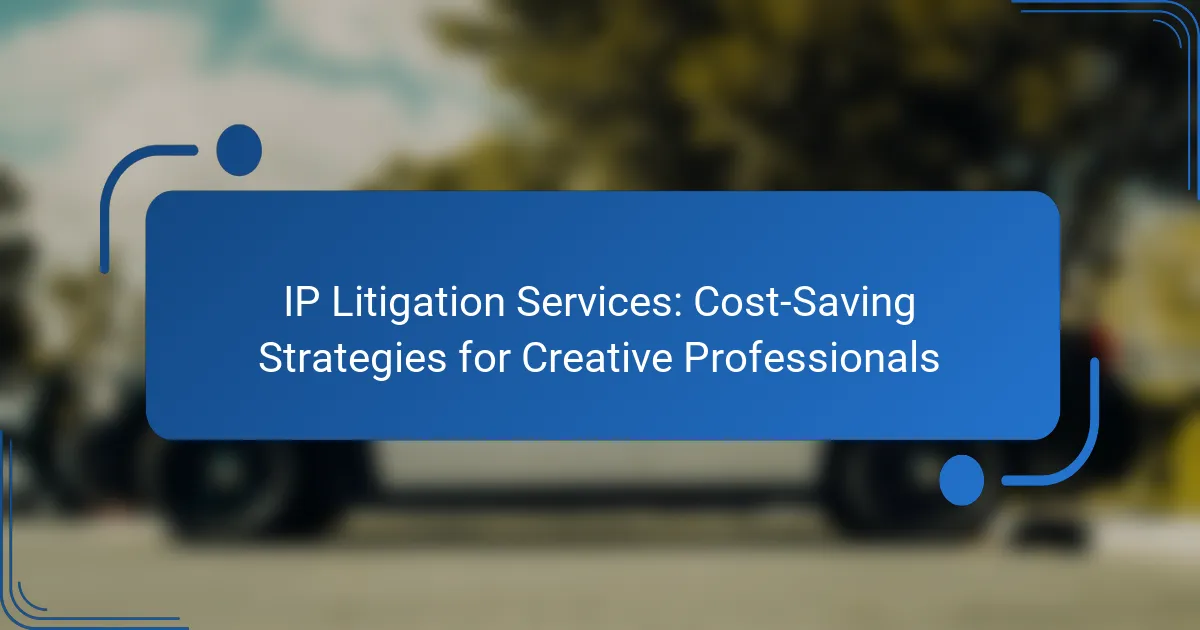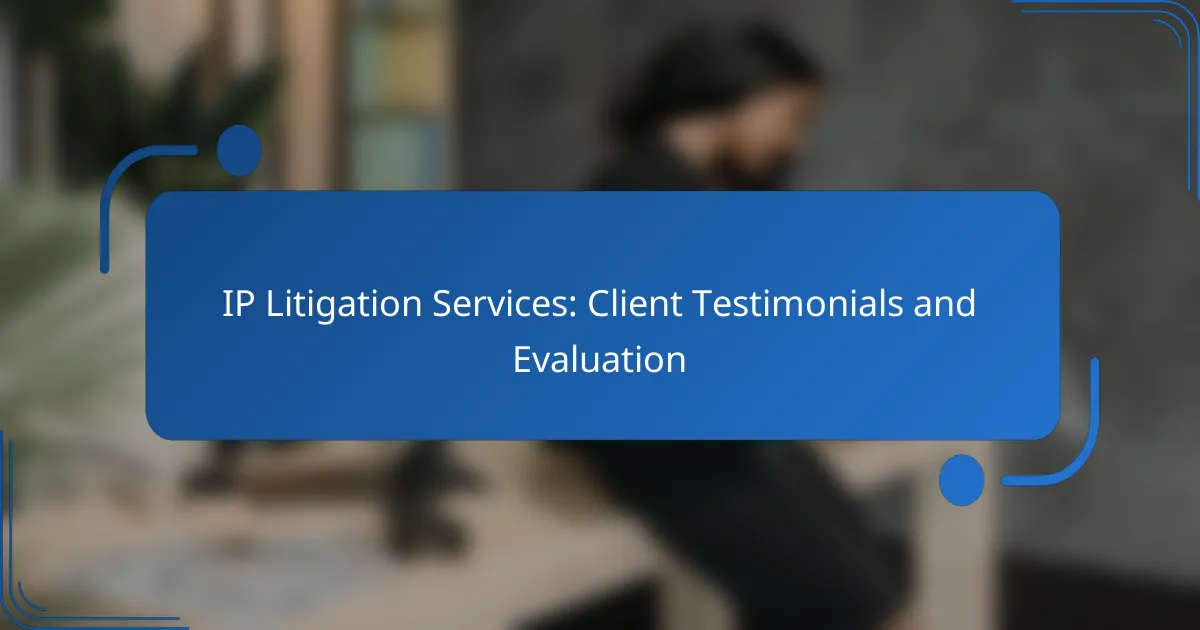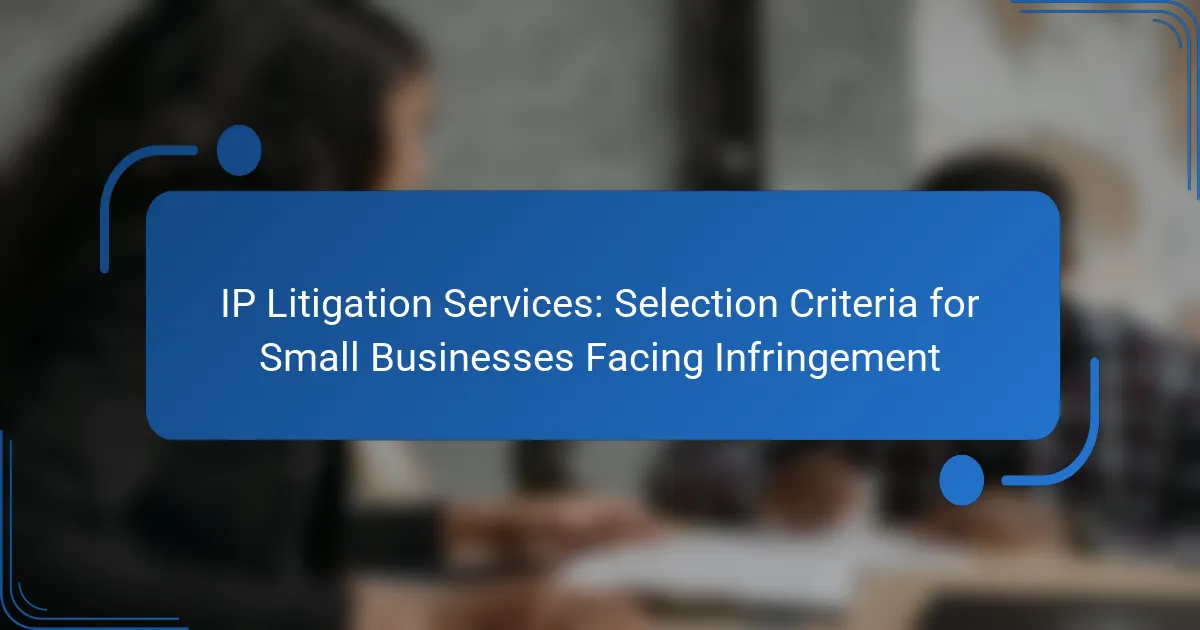In the realm of IP litigation, creative professionals can implement cost-saving strategies to effectively safeguard their intellectual property without incurring excessive expenses. By leveraging techniques such as negotiating payment plans, utilizing legal technology, and seeking early legal consultation, they can significantly reduce legal fees and streamline their processes. These proactive measures not only help manage costs but also enhance the overall efficiency of legal support.
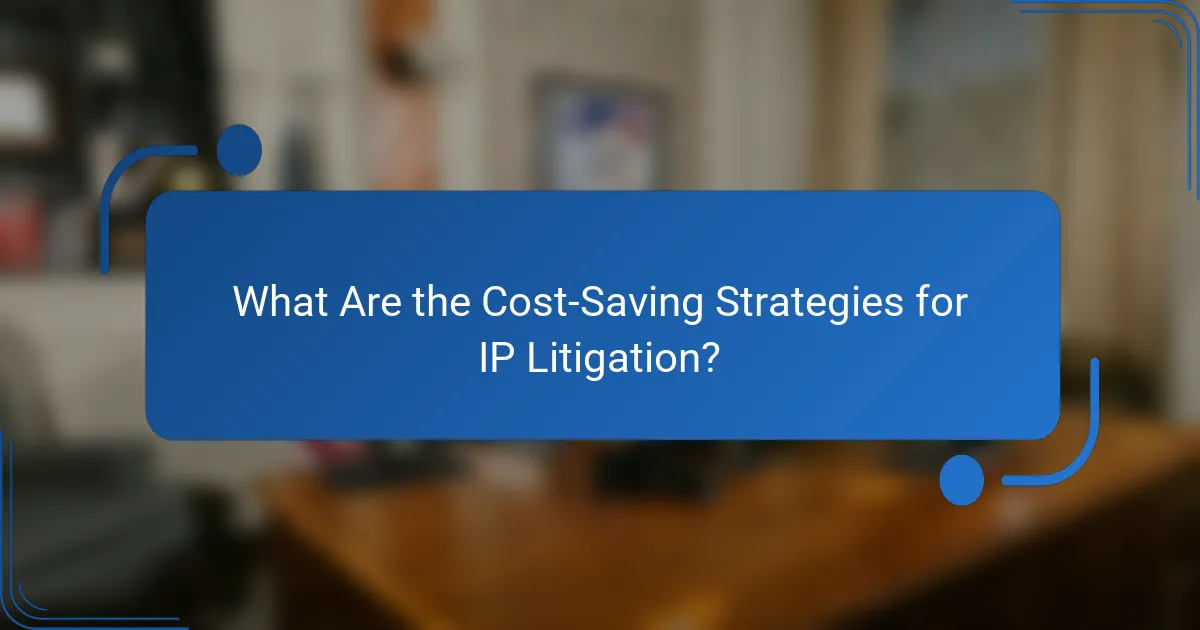
What Are the Cost-Saving Strategies for IP Litigation?
Cost-saving strategies for IP litigation involve various approaches that creative professionals can adopt to minimize expenses while effectively protecting their intellectual property. These strategies can help reduce legal fees, streamline processes, and ultimately save time and resources.
Utilizing Alternative Dispute Resolution
Alternative Dispute Resolution (ADR) methods, such as mediation and arbitration, can significantly lower litigation costs. These processes are typically faster and less formal than traditional court proceedings, allowing for quicker resolutions and reduced attorney fees.
For example, mediation can resolve disputes in a matter of weeks, whereas court cases may take months or even years. ADR also provides more control over the outcome, as parties can negotiate terms that suit their needs.
Leveraging Insurance Policies
Many creative professionals can benefit from intellectual property insurance, which can cover legal costs associated with IP litigation. This type of insurance can help mitigate financial risks and provide peace of mind when facing potential disputes.
When considering insurance, evaluate policies that specifically cover IP-related issues, such as infringement claims or defense costs. Premiums can vary widely, so it’s essential to compare options and choose a plan that aligns with your business needs.
Implementing Preventative Measures
Taking proactive steps to protect intellectual property can prevent costly litigation down the line. This includes conducting thorough trademark searches, registering copyrights, and using non-disclosure agreements (NDAs) when sharing sensitive information.
Regularly reviewing and updating IP assets can also help identify potential vulnerabilities. By addressing these issues early, creative professionals can avoid disputes and the associated legal expenses.
Engaging in Pro Bono Services
Many law firms and organizations offer pro bono legal services to individuals and businesses facing IP challenges. Engaging with these resources can provide valuable legal support without incurring significant costs.
Research local legal aid organizations or law schools that may offer free consultations or assistance. This can be an excellent way to receive guidance on IP matters while conserving financial resources.
Choosing Flat Fee Arrangements
Opting for flat fee arrangements with legal counsel can provide predictability in budgeting for IP litigation. Unlike hourly billing, flat fees allow clients to know upfront what their legal expenses will be, reducing the risk of unexpected costs.
When negotiating fees, ensure that the scope of services is clearly defined. This clarity can help avoid misunderstandings and ensure that you receive the necessary support without overspending.
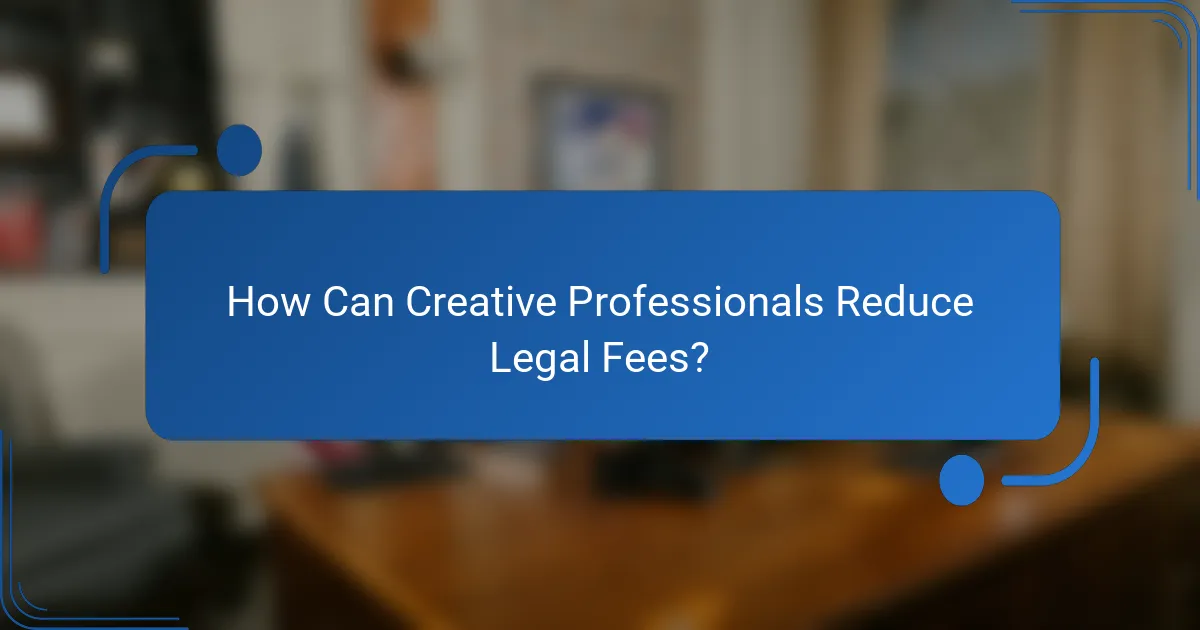
How Can Creative Professionals Reduce Legal Fees?
Creative professionals can reduce legal fees by employing strategic approaches such as negotiating payment plans, utilizing legal technology tools, and conducting in-house research. These methods can help manage costs while ensuring effective legal support.
Negotiating Payment Plans
Negotiating payment plans with legal service providers can significantly lower upfront costs. Many attorneys are open to flexible payment arrangements, allowing you to spread payments over time rather than paying a lump sum.
When discussing payment plans, be clear about your budget and financial constraints. Propose terms that work for both parties, such as monthly payments or milestone-based billing, to maintain a good relationship with your attorney.
Using Legal Technology Tools
Legal technology tools can streamline various aspects of the legal process, reducing the time and money spent on litigation. Software for document management, contract review, and case tracking can automate tasks that would otherwise require extensive attorney hours.
Consider investing in tools like e-discovery platforms or legal research databases, which can provide valuable insights without the need for constant attorney involvement. Many of these tools offer subscription models that can be more cost-effective than traditional legal services.
Conducting In-House Research
Conducting in-house research can save on legal fees by allowing you to gather information before consulting with an attorney. Familiarizing yourself with relevant laws, regulations, and case precedents can help you ask informed questions and reduce billable hours.
Utilize online resources, such as legal blogs, government websites, and industry publications, to enhance your understanding of intellectual property issues. This preparation can lead to more productive discussions with your legal counsel, ultimately saving you money.
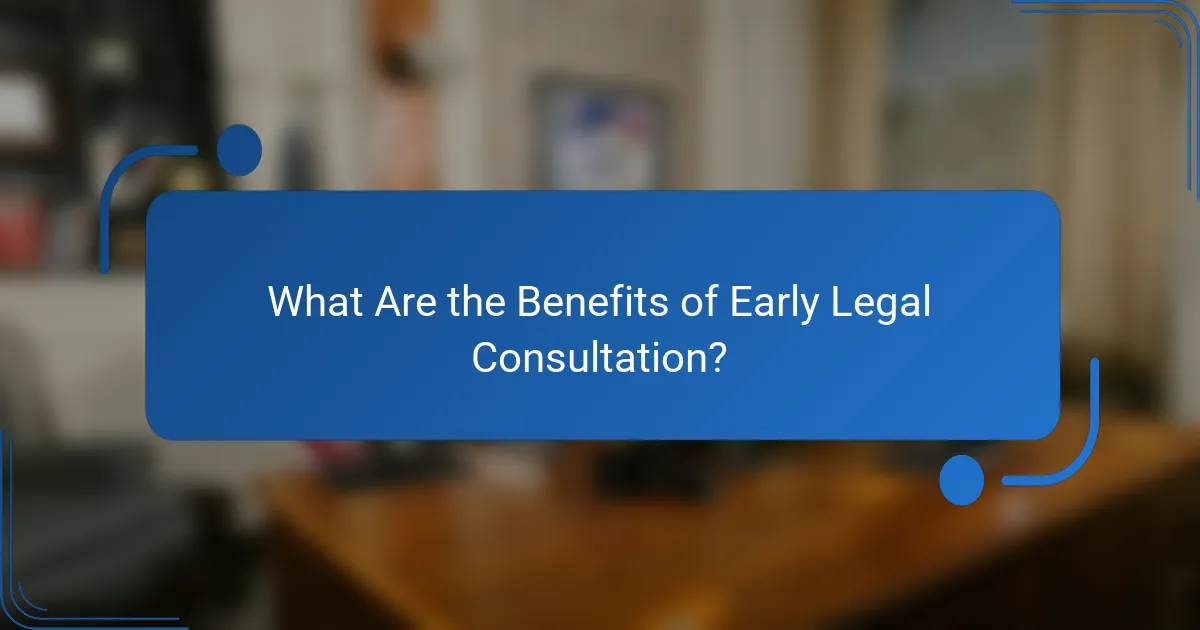
What Are the Benefits of Early Legal Consultation?
Early legal consultation provides creative professionals with crucial advantages, including risk identification and efficient litigation strategies. Engaging a legal expert at the outset can help avoid costly disputes and streamline the resolution process.
Identifying Risks Early
Identifying risks early in the creative process is essential to protect intellectual property. By consulting with a legal professional, you can pinpoint potential infringement issues or contractual pitfalls before they escalate into serious problems.
For instance, understanding copyright laws and trademark registrations can prevent unintentional violations. Regular legal check-ins can help you stay informed about changes in regulations that may impact your work, ensuring compliance and reducing liability.
Streamlining the Litigation Process
Early legal consultation can significantly streamline the litigation process if disputes arise. By having a legal strategy in place, you can avoid unnecessary delays and expenses associated with protracted legal battles.
For example, a well-prepared legal team can quickly gather necessary documentation and evidence, facilitating a smoother resolution. Additionally, understanding your rights and obligations allows for more effective negotiation, potentially leading to settlements that save time and money.
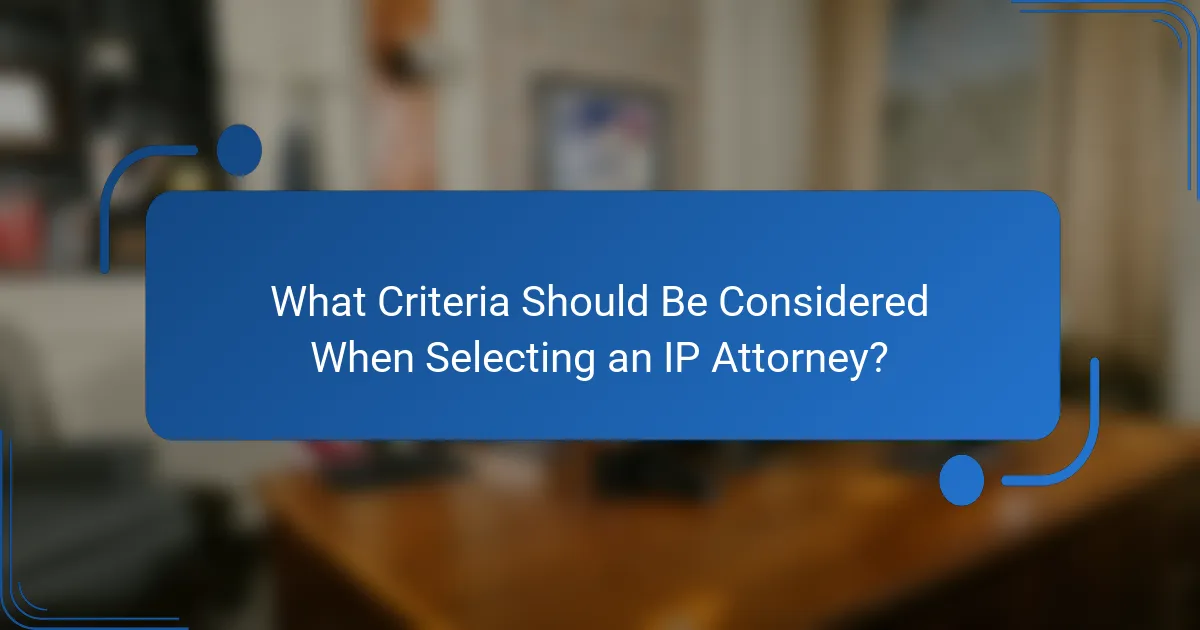
What Criteria Should Be Considered When Selecting an IP Attorney?
Selecting an IP attorney involves evaluating several key criteria that ensure the attorney is well-suited to meet the specific needs of creative professionals. Focus on their experience in creative industries, transparency in fee structures, and the feedback from previous clients.
Experience in Creative Industries
When choosing an IP attorney, prioritize those with a strong background in creative industries such as music, film, art, or design. An attorney familiar with the nuances of your field will better understand the unique challenges and opportunities you face.
Look for attorneys who have represented clients similar to you and have a proven track record in handling cases relevant to your work. This experience can significantly impact the effectiveness of their legal strategies.
Fee Structure Transparency
Understanding an attorney’s fee structure is crucial to avoid unexpected costs. Seek attorneys who clearly outline their billing practices, including hourly rates, flat fees, or retainer agreements.
Consider asking for a detailed breakdown of potential costs associated with your case. This transparency helps you budget effectively and ensures there are no surprises as your legal needs evolve.
Client Testimonials and Reviews
Client testimonials and reviews provide valuable insights into an attorney’s effectiveness and client service. Look for feedback that highlights the attorney’s communication skills, responsiveness, and success in achieving favorable outcomes.
Online platforms and professional networks can be excellent resources for gathering reviews. Pay attention to patterns in feedback, as consistent praise or criticism can guide your decision-making process.

How Do Different IP Litigation Models Compare?
Different IP litigation models can significantly affect costs and outcomes for creative professionals. Understanding these models helps in selecting the most suitable approach based on budget, risk tolerance, and case complexity.
Hourly Billing vs. Flat Fees
Hourly billing charges clients based on the actual time attorneys spend on a case, typically ranging from $150 to $600 per hour, depending on the attorney’s experience and location. This model can lead to unpredictable costs, especially in complex cases where hours can accumulate quickly.
Flat fees, on the other hand, provide a set price for specific services, offering clarity and predictability in budgeting. This model is often preferred for straightforward cases, as it allows creative professionals to know their total expenses upfront, avoiding surprises.
Contingency Fees Explained
Contingency fees are a payment structure where attorneys receive a percentage of the settlement or award only if the case is won. This model is often used in IP litigation, particularly for cases with strong potential for success, as it minimizes upfront costs for clients.
Typically, contingency fees range from 20% to 40% of the recovery amount, which can be beneficial for creative professionals who may not have the resources to pay hourly or flat fees. However, it’s crucial to understand the terms clearly, as higher percentages can significantly impact the final amount received.

What Are the Emerging Trends in IP Litigation for Creative Professionals?
Emerging trends in IP litigation for creative professionals include a growing emphasis on alternative dispute resolution, increased use of technology in legal processes, and a focus on international IP rights. These trends reflect the evolving landscape of intellectual property as it adapts to new challenges and opportunities in the digital age.
Alternative Dispute Resolution (ADR) in IP Cases
Alternative dispute resolution methods, such as mediation and arbitration, are becoming more popular in IP litigation. These approaches can save time and costs compared to traditional court proceedings, making them appealing for creative professionals who often operate on tight budgets.
For instance, mediation allows parties to negotiate a settlement with the help of a neutral third party, which can lead to quicker resolutions. Creative professionals should consider ADR as a viable option before resorting to litigation, as it often results in less adversarial outcomes.
Technology’s Role in IP Litigation
The integration of technology in IP litigation is transforming how cases are managed and presented. Tools like e-discovery software streamline the process of gathering and analyzing evidence, while virtual hearings reduce travel costs and time commitments.
Creative professionals can leverage these technologies to enhance their legal strategies. For example, using cloud-based platforms for document sharing can improve collaboration with legal teams, ensuring that all relevant information is accessible and organized.
International Considerations for IP Rights
As creative professionals increasingly operate on a global scale, understanding international IP rights is crucial. Different countries have varying laws and regulations regarding intellectual property, which can impact how rights are enforced and protected.
Professionals should familiarize themselves with treaties like the Berne Convention and the TRIPS Agreement, which establish minimum standards for IP protection internationally. Consulting with legal experts who specialize in international IP can help navigate these complexities and avoid costly pitfalls.
